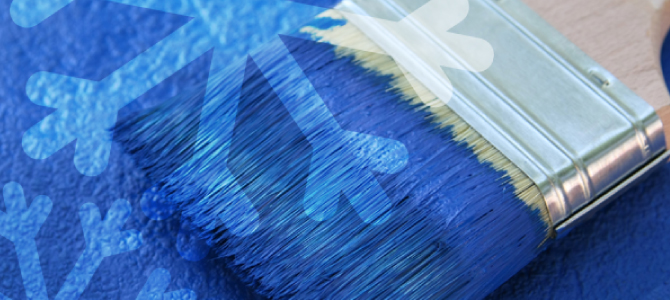13 June 2016

How to Paint in the Cold
Paint (and varnish, stains and sealers for that matter) are liquids and that means that in colder weather they tend to become more viscous. That tends to make stirring the product and then applying it that much more difficult. (In this article we are going to use the term ‘painting’ and ‘paint’ to apply to varnishes, stains and sealers as well.)
Generally South Africa is blessed with moderate temperatures, though that might well be changing. In any event, snow is common in winter is some parts of the country in winter, as is extremely hot weather in summer, so temperature is a factor when painting.
The most basic rule is this: follow the shade when painting in summer and follow the sun when painting in winter.
The exterior of your home is generally exposed to greater temperature extremes than the interior… a north-facing outside wall, window frames and so on might be very cold before dawn in winter, and then warm up quite a bit once the sun begins to heat everything up.
Hence, consider doing your painting from around mid-morning to mid-afternoon.
Also bear in mind that the colder it is, the longer it takes for any coating to dry completely. Often the labels on the containers provide information on the drying time at a particular temperature… six hours at an ambient temperature of 25°C, for instance.
However, the ambient temperature might not be the same as that of the surface that you are painting and that is where an infrared thermometer can come in very handy, by providing an accurate reading for the actual surface – and that can affect the drying time.
Method:
- As said above, the colder it is, the more viscous the paint is likely to be so consider using a nylon/polyester paintbrush in cold weather; the bristles tend to be stiffer and so applying a more viscous coating using this type of brush will achieve better results.
- You’ve heard of the chill factor? Bear in mind that the movement of air can affect the surface temperature; even a light breeze will speed evaporation of the moisture in a water-based paint coating and that will speed drying. In the case of solvent-based paints, however, the drying time can take even longer in cold weather, so before applying a subsequent coat, check that the previous coat is completely dry.
- If you are going to apply more than one coat, err on the side of caution and allow extra time for any coating to dry properly. If you apply a second or third coat too soon, you may get blistering.
- In extreme cases, water-based paints can even freeze in the middle of winter when night-time temperatures can fall well below freezing.
- In the case of alkyd and oil paints, which contain natural oils and resins, they can become very viscous in cold weather, so the actual task of applying the finish – a chore to begin with – becomes even more of a pain.
- Signs that things have not gone according to plan after you applied a finish in the middle of winter might include… it took you longer and it was much harder to stir the finish, colour is not uniform, the coating has bubbled or blistered, the film had cracked.
An infrared thermometer is a great aid… from checking surface temperatures, to finding out where the hottest part of the braai fire is.

You can toggle from °C to °F (if the product you are using is imported and uses the °F unit of measurement) and the very accurate readout will enable you to make informed decisions as to when to begin applying a finish to a surface.
